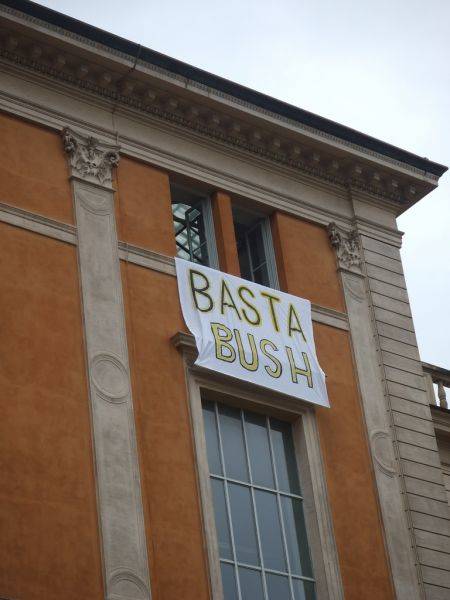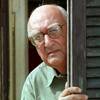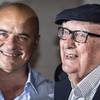Bush's Roman Holiday
George W. Bush visited Italy again, one year after his previous visit to the country. On June 11 the American President arrived in Rome as part of a European tour, his last for the remainder of his tenure. The trip took Mr. Bush to Germany, Italy, France, Britain, and to his final European Union summit in Slovenia.
In one year some things have changed here in Italy. For starters there is a new government—even if the Prime Minister is not exactly a “brand new” one—in charge again for the third time, Bush's “old friend” Silvio Berlusconi.
What haven’t changed, though, are the protests against Mr.Bush: thousands of people gathered in the center of Rome to demonstrate against the U.S. President’s visit. Marco Ferrando, a member of the Workers’ Communist Party, said: “We demonstrate against the government of the United States and its war policies, its social, military and environmental crimes around the world but also against the Italian center-right government which, as was the case with the former center-left one, is allied with the U.S. government, and thus co-responsible for such policies”. About 1000 people marched on the U.S. embassy in Rome to protest against Mr. Bush’s foreign policy. The march was accompanied by a heavy police presence. “Bush Terrorist,” “Warlord Bush”, “Italy out of NATO” were some of the slogans shouted by the protesters, who were mainly Italian but also included Americans of the Rome-based U.S. Citizens for Peace and Justice. A representative of the group, Stephanie Westbrook, stated that they were there to denounce Bush’s war crimes. “We don’t mean that as a slogan, it’s a well-documented case by now—she continued—(including) the criminal war against Iraq, torture and threats against Iran”. She also said: “We’ll also be calling for impeachment because it’s extremely important ... to establish a precedent for this crime to prevent future abuses of power.” The protesters followed Mr. Bush through all the steps of his visit, and outside the American Academy in Rome’s Villa Aurelia there were the usual slogans against the President, who was there to meet a group of young Italian entrepreneurs. They participated in the Fulbright Best, an exchange program planning their visit to the U.S. Mr. Bush urged them to ignore the “misinformation and propaganda” spread about his country and to learn the “first-hand truth about America” by visiting. “The best diplomacy for America, particularly among young folks, is to welcome you to our country,” he said. “We are compassionate, we are an open country, we care about people and we are entrepreneurial.”
During the visit of the American President, Rome was practically under siege: commercial flights over the city had been diverted, 10,000 policemen had been mobilized, there were frogmen under bridges and snipers on roofs, and mobile phone signals were disrupted whenever the motorcade moved from a part of the city to another; dozens of bus and tram lines were also rerouted. Inevitably, it all fomented an incredible chaos in Roman traffic that, as a rule, is a real mess every day anyway. During Mr. Bush’s visit Rome was practically paralyzed, and it was not infrequent to hear a crush of people, yelling at Mr. Bush in different languages, as 15 Presidential cars passed and blocked their way. Not only Romans, but tourists as well, were burdened by the emergency protocol created to protect Mr.Bush.
The troubles created by the visit yielded unexpected developments: in fact, because of the President’s trip, surgeons at the Policlinico Umberto I in Rome had to postpone a bone marrow transplant. Strange, but true, some places at the Hematology Unit were set aside as part of an emergency plan in place for Bush’s arrival. As a result, all surgical operations in certain units of Roman hospitals were postponed. This also stirred up protests against the American President, with many patients who truly lost their nerve and voiced their grievances, adding to all the shouting directed at the not particularly popular Mr. Bush.
The American President met Italian President Giorgio Napolitano, Prime Minister Silvio Berlusconi and Pope Benedict XVI. This last meeting signaled a break from protocol: in fact the Pontiff decided to stand and wait for Mr. Bush’s arrival, before leading him up to the medieval St. John’s Tower. Typically, papal audiences take place in the pontiff’s private library. George W. Bush was the first head of state to be personally greeted by the Pope and led for a walk in the Vatican Gardens. The Holy See said the Pope wanted to show his gratitude for the hospitality extended to him on his recent visit to the
After meetings, chaos and protests, President Bush’s Roman holiday ended in the most classic of ways: a romantic dinner with his wife Laura, in an effort to be, if only briefly, a “normal” tourist in Rome. The restaurant, L’Antica Pesa, is one of the most beloved places in the Trastevere area. The menu was typically Roman, with two first courses, “pasta cacio e pepe” and “amatriciana”, along with local specialties suggested by the restaurant’s owners—naturally pleased to have such illustrious guests.
No doubt the memory of Trastevere by night will add a dose of sweetness to the rather bitter taste of George W. Bush’s last Presidential holiday in Rome.
(Edited by Eleonora Mazzucchi)







































i-Italy
Facebook
Google+
This work may not be reproduced, in whole or in part, without prior written permission.
Questo lavoro non può essere riprodotto, in tutto o in parte, senza permesso scritto.